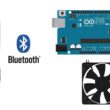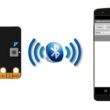JQC-3FF-S-Z RELAYS

Relay Definition
A relay is an electrical switch that is operated by an electromagnetic coil. It is used to control the switching of one or more circuits using a separate low-power signal, such as a digital signal from a microcontroller or a switch. Relays are commonly used in a wide range of applications, from simple domestic appliances to complex industrial control systems.
The basic operation of a relay involves an electromagnetic coil that generates a magnetic field when a current flows through it. The magnetic field pulls or releases a metal armature or plunger that is mechanically linked to one or more electrical contacts. When the contacts are closed, the electrical circuit is completed, allowing current to flow through the load. When the contacts are open, the circuit is broken and no current flows.
Relays can be designed to switch different types of loads, such as AC or DC voltage, high or low current, and different switching frequencies. They can also be designed with different contact configurations, such as single-pole-single-throw (SPST), single-pole-double-throw (SPDT), double-pole-single-throw (DPST), and double-pole-double-throw (DPDT).
Relays are used in a variety of applications, including industrial control systems, telecommunications, automotive, aerospace, and home automation. They are often used to switch motors, lights, heaters, solenoids, valves, and other electrical loads. Relays can also be used as protective devices to shut down circuits in the event of an overload or other fault condition.
JQC-3FF-S-Z Relay Overview

The JQC-3FF-S-Z relay is a general-purpose electromechanical relay that can be used in a wide range of applications, including industrial automation, process control systems, security systems, and communication equipment.
The JQC-3FF-S-Z relay is a 5-pin relay with a 12V DC coil. It has a rated switching capacity of 10A at 250V AC/30V DC and is available in several contact configurations, including a single-pole double-throw (SPDT) contact. It can be mounted on a printed circuit board or on a screw-type relay base.
Relay and robotics
Relays can be used in robotics to control the switching of electrical circuits, such as motors, lights, and sensors. They can be used to provide isolation between the microcontroller and the high-power circuits, protecting the microcontroller from potential damage.
For example, a robot arm may have several motors that need to be controlled by a microcontroller. The microcontroller can send low-power signals to the relays, which can then switch the high-power circuits that control the motors. This allows the microcontroller to control the robot arm without being directly connected to the high-power circuits.
Relays can also be used in safety-critical applications, such as emergency stop circuits. If a fault occurs in the robot or its control system, the relay can be used to shut down the high-power circuits and prevent damage or injury.
Relays and microcontrollers
Relays are commonly used in conjunction with microcontrollers to control high-power electrical circuits. Microcontrollers are typically low-power devices that operate at low voltages, while many electrical loads require high voltage and current levels.
By using relays, the microcontroller can send a low-power signal to control the switching of a high-power circuit. For example, a microcontroller can send a signal to a relay to turn on or off a motor, a heater, or a light.
In order to control a relay with a microcontroller, the relay must be connected to a driver circuit that provides sufficient current and voltage to operate the relay coil. The driver circuit can be a transistor, a MOSFET, or an integrated circuit designed specifically for driving relays.
Microcontrollers can also be used to monitor the state of relays and provide feedback to the user or to the control system. For example, a microcontroller can read the state of a relay connected to a sensor or a switch and take appropriate action based on the reading.























